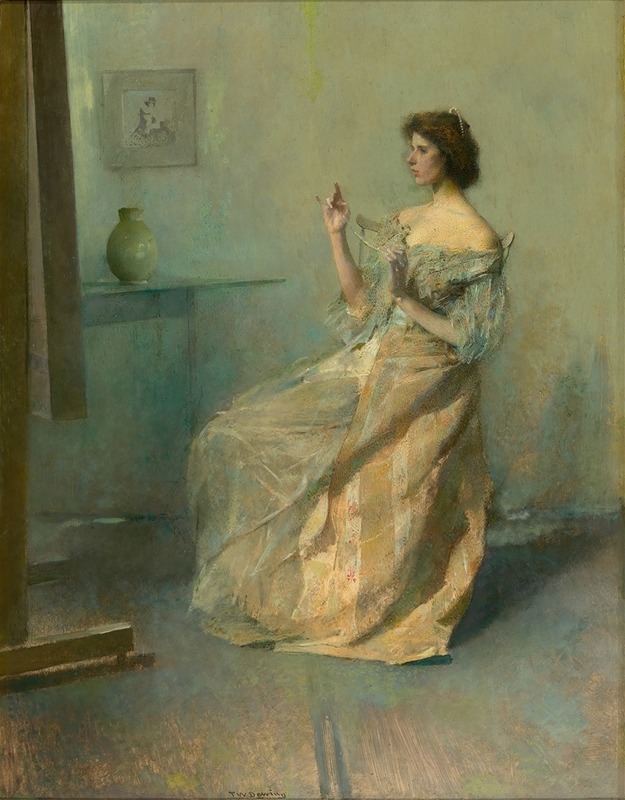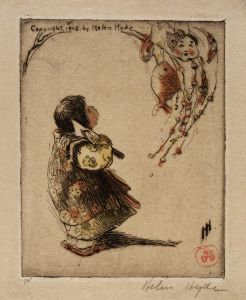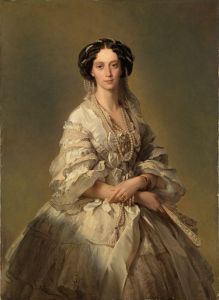
The Necklace
A hand-painted replica of Thomas Wilmer Dewing’s masterpiece The Necklace, meticulously crafted by professional artists to capture the true essence of the original. Each piece is created with museum-quality canvas and rare mineral pigments, carefully painted by experienced artists with delicate brushstrokes and rich, layered colors to perfectly recreate the texture of the original artwork. Unlike machine-printed reproductions, this hand-painted version brings the painting to life, infused with the artist’s emotions and skill in every stroke. Whether for personal collection or home decoration, it instantly elevates the artistic atmosphere of any space.
Thomas Wilmer Dewing was an American painter associated with the Tonalist movement, known for his ethereal and atmospheric works that often depicted women in elegant, introspective poses. One of his notable paintings is "The Necklace," created in 1907. This artwork exemplifies Dewing's characteristic style, which combines a delicate color palette with a focus on mood and subtle emotion.
"The Necklace" portrays a solitary female figure, a common subject in Dewing's oeuvre. The woman is depicted in a contemplative pose, seated and holding a necklace, which serves as the focal point of the composition. The setting is intimate and understated, with the background rendered in soft, muted tones that enhance the sense of tranquility and introspection. Dewing's use of color is particularly notable; he employs a harmonious blend of greens, blues, and earth tones to create a serene and dreamlike atmosphere.
Dewing's technique is marked by his meticulous attention to detail and his ability to convey texture and light with a delicate touch. In "The Necklace," the artist's skillful handling of paint is evident in the way he captures the sheen of the necklace and the subtle play of light on the woman's skin and dress. This attention to detail, combined with the painting's overall composition, draws the viewer into the intimate world of the subject, inviting contemplation and reflection.
The painting reflects Dewing's interest in the aesthetic movement and the influence of Japanese art, which was popular among American and European artists during this period. The simplicity of the composition, the emphasis on line and form, and the subdued color palette all suggest the impact of Japanese aesthetics on Dewing's work. Additionally, the painting aligns with the Tonalist movement's focus on mood and atmosphere rather than narrative or realism.
Dewing's choice of subject matter and his approach to composition were also influenced by his association with the Cornish Art Colony in New Hampshire, where he spent significant time during the summer months. The colony was a gathering place for artists, writers, and intellectuals, and it provided Dewing with a supportive environment in which to explore his artistic ideas. The introspective quality of "The Necklace" can be seen as a reflection of the contemplative and creative atmosphere of the Cornish Art Colony.
"The Necklace" is housed in the collection of the Smithsonian American Art Museum, where it continues to be appreciated for its beauty and subtlety. The painting is a testament to Dewing's mastery of the Tonalist style and his ability to convey emotion and atmosphere through his art. It remains a significant example of early 20th-century American painting, illustrating the enduring appeal of Dewing's work and his contribution to the development of American art.
In summary, "The Necklace" by Thomas Wilmer Dewing is a quintessential example of the artist's Tonalist style, characterized by its focus on mood, subtle color palette, and introspective subject matter. The painting's delicate execution and atmospheric quality continue to captivate viewers, securing Dewing's place as a notable figure in American art history.


















